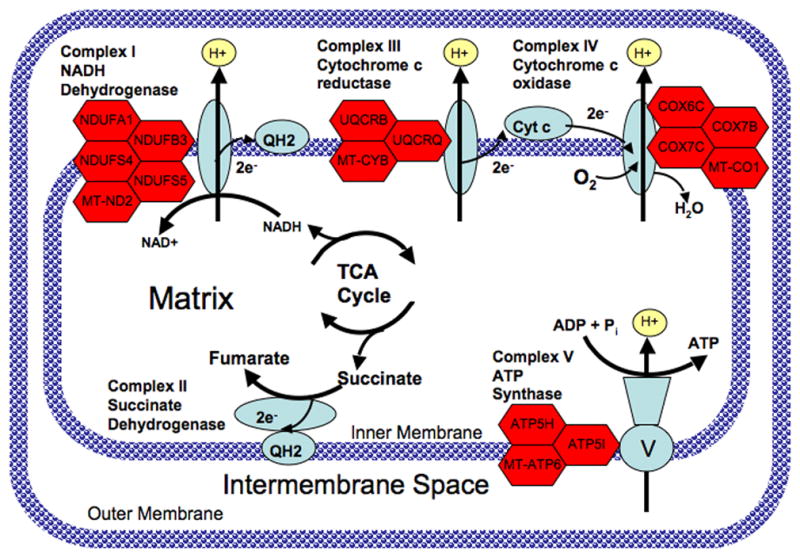Fig. 1.

Diagram of the mitochondrial electron transport chain showing genes with altered expression in subjects with bipolar disorder (BPD). Complex I (NADH dehydrogenase) catalyzes the removal of two electrons from NADH and transfers them to the electron carrier ubiquinone (Q). The reduced product is ubiquinol (QH2). Complex II (succinate dehydrogenase) catalyzes the conversion of succinate to fumarate and in the process transfers two electrons to ubiquinone via FAD. Complex III catalyzes the removal of two electrons from QH2 and transfers them to two molecules of the electron carrier, cytochrome c. Complex IV removes two electrons from the two molecules of cytochrome c and transfers them to molecular oxygen (O2), producing water. The proton gradient established by pumping hydrogens across the inner mitochondrial membrane is then utilized by Complex V (ATP synthase) to catalyze the formation of ATP from ADP and Pi. Genes encoding various subunits of complexes I, III, IV, and V that were up-regulated in peripheral blood of subjects with BPD are shown as red hexagons next to the corresponding complex.
